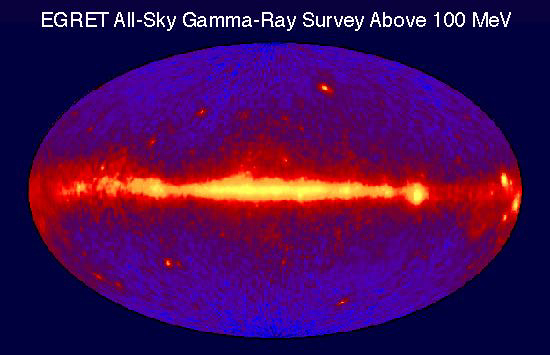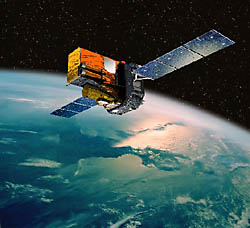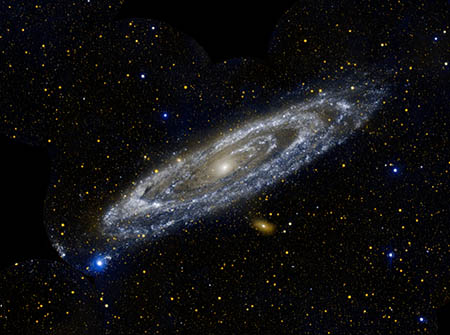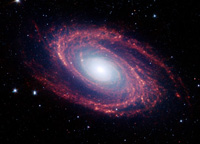 The Compton Gamma Ray Observatory (GRO)
"The Compton Gamma Ray Observatory (GRO) is a sophisticated satellite observatory dedicated to observing the high-energy Universe. It is the second in NASA's program of orbiting "Great Observatories", following the Hubble Space Telescope. While Hubble's instruments operate at visible and ultraviolet wavelengths, Compton carries a collection of four instruments which together can detect an unprecedented broad range of high-energy radiation called gamma rays. These instruments are the Burst And Transient Source Experiment (BATSE), the Oriented Scintillation Spectrometer Experiment (OSSE), the Imaging Compton Telescope (COMPTEL), and the Energetic Gamma Ray Experiment Telescope (EGRET).
These four instruments are much larger and more sensitive than any gamma-ray telescopes previously flown in space. The large size is necessary because the number of gamma-ray interactions that can be recorded is directly related to the mass of the detector. Since the number of gamma-ray photons from celestial sources is very small compared to the number of optical photons, large instruments are needed to detect a significant number of gamma rays in a reasonable amount of time. The combination of these instruments can detect photon energies from 20 thousand electron volts (20 keV) to more than 30 billion electron volts (30 GeV).
The table of instrument capabilities for the four experiments describes their fields of view, sensitivities to continuum and line emissions, and angular and energy resolutions. An appreciation of the purpose and design of Compton's four instruments is gained from understanding that above the energies of X-ray photons (~10 keV - about 10,000 times the energy of optical photons) materials cannot easily refract or reflect the incoming radiation to form a picture. Hence, alternative methods are required to collect gamma-ray photons and thereby image sources in the sky. At gamma-ray energies, three methods are currently used, sometimes in combination: (1) partial or total absorption of the gamma ray's energy within a high-density medium, such as a large crystal of sodium iodide, (2) collimation using heavy absorbing material, to block out most of the sky and realize a small field of view, and (3) at sufficiently high energies, utilization of the conversion process from gamma rays to electron-positron pairs in a spark chamber, which leaves a telltale directional signature of the incoming photon." ... more
The Compton Gamma Ray Observatory was the second of NASA's Great Observatories. Compton, at 17 tons, was the heaviest astrophysical payload ever flown at the time of its launch on April 5, 1991 aboard the space shuttle Atlantis. Compton was safely deorbited and re-entered the Earth's atmosphere on June 4, 2000.
|









 - Astronautic
- Astronautic - Astronomy
- Astronomy - Space Astronomy
- Space Astronomy

